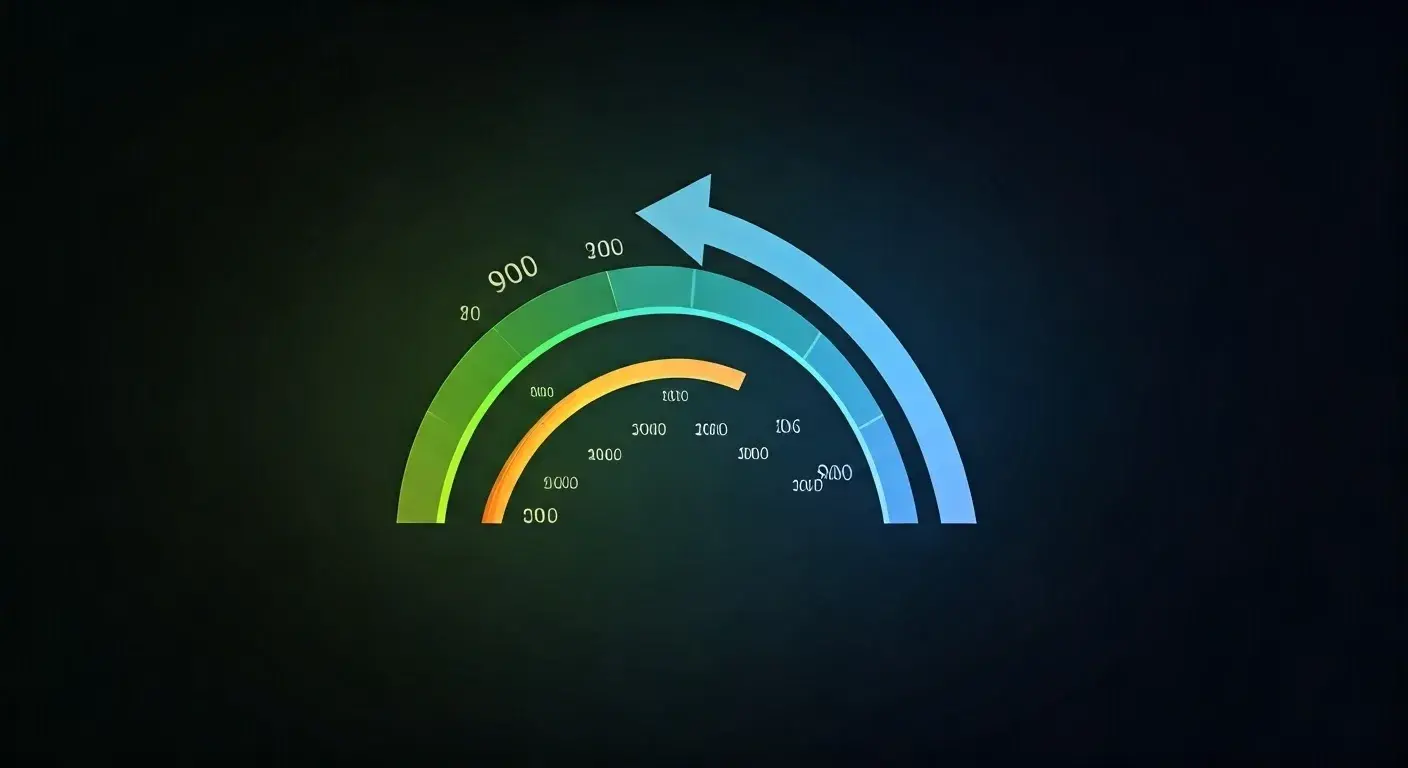-
Posted on: 30 Jul 2024
-
Discovering that your credit is frozen can be a jarring experience, especially if you didn't initiate the freeze yourself. While a credit freeze, also known as a security freeze, is a powerful tool to protect yourself from identity theft, encountering one unexpectedly raises serious concerns. This article will delve into the possible reasons behind an unrequested credit freeze, what steps you should take to investigate, and how to resolve the situation.
Understanding Credit Freezes
Before we explore the potential causes of an unexpected credit freeze, let's briefly review what a credit freeze is and how it typically works.
A credit freeze restricts access to your credit report, making it difficult for identity thieves to open new accounts in your name. When a lender attempts to check your credit report to approve a new application (for a credit card, loan, etc.), they'll be unable to do so if your credit is frozen. This effectively prevents unauthorized access to your credit information.
You, the consumer, must proactively request a credit freeze from each of the three major credit bureaus: Equifax, Experian, and TransUnion. You also have the power to temporarily lift the freeze or permanently remove it when you need to apply for credit.
Possible Reasons for an Unexpected Credit Freeze
Now, let's investigate why your credit might be frozen even if you didn't request it. Several possibilities exist, ranging from simple misunderstandings to more serious cases of fraud or error.
1. Mistaken Identity or Clerical Error
While rare, credit bureaus can sometimes make mistakes. A clerical error might lead them to believe you requested a freeze when you didn't, or they might incorrectly apply a freeze to your credit file that was intended for someone else with a similar name or address.
2. You Requested a Freeze and Forgot
It's possible you requested a credit freeze in the past and simply forgot about it. This is more common than you might think. Life gets busy, and it's easy to overlook a security measure you put in place months or even years ago. Check your records (emails, letters) for any documentation related to credit freezes you may have initiated.
3. Identity Theft or Fraudulent Activity
One of the most concerning reasons for an unexpected credit freeze is that you've been a victim of identity theft. A thief, having gained access to your personal information, might have fraudulently requested a credit freeze to prevent you from detecting their illicit activities, such as opening new accounts in your name. They freeze your credit to buy themselves time to exploit your identity without your immediate knowledge. This scenario requires immediate attention.
4. Account Compromise or Security Breach
If you've received notifications about a data breach affecting an account you hold (e.g., a bank account, retail account, or email address), your information may have been compromised. As a precautionary measure, the breached company, or even a credit bureau itself, might have initiated a credit freeze on your behalf without your explicit consent, especially if they detect suspicious activity on your accounts. They often do this to mitigate potential damages from the data breach.
5. A Family Member (Possibly a Minor) Requested the Freeze
If you have children, especially minors, or elderly parents you assist with their finances, it's possible that they (or someone acting on their behalf) requested a credit freeze without your knowledge. For children, parents may freeze their credit proactively to prevent identity theft. Elderly parents may have requested a freeze to protect themselves from scams, and then forgotten about it. Discuss with family members to see if they initiated the freeze.
6. Legal Guardianship or Conservatorship
If you are under legal guardianship or conservatorship, the guardian or conservator may have the authority to freeze your credit. Review the terms of the guardianship or conservatorship to understand their powers related to your finances and credit.
Steps to Take When You Discover an Unexpected Credit Freeze
Discovering an unexpected credit freeze can be unsettling. Here's a step-by-step guide on what to do:
1. Contact Each of the Credit Bureaus
Your first and most crucial step is to contact Equifax, Experian, and TransUnion individually. You can do this online, by phone, or by mail. Inquire about the status of your credit freeze with each bureau. Ask them:
- Is a credit freeze currently in place on my credit report?
- When was the freeze initiated?
- Who requested the freeze (if they can disclose this information)?
- What documentation is required to lift the freeze if I didn't request it?
Keep detailed records of your communications with each bureau, including the date, time, name of the representative you spoke with, and the information they provided.
Here are the contact details for each bureau:
- Equifax:
- Website: https://www.equifax.com/
- Phone: 1-800-685-1111
- Experian:
- Website: https://www.experian.com/
- Phone: 1-888-397-3742
- TransUnion:
- Website: https://www.transunion.com/
- Phone: 1-800-916-8800
2. Request a Free Copy of Your Credit Reports
Obtain a free copy of your credit reports from each of the three major credit bureaus. You can do this by visiting AnnualCreditReport.com, the only authorized website for free credit reports. Carefully review each report for any suspicious activity, such as unauthorized accounts, unfamiliar addresses, or incorrect personal information. Discrepancies on your credit report are a red flag for identity theft.
3. File a Police Report if You Suspect Identity Theft
If you believe you've been a victim of identity theft, file a police report immediately. This report will be essential for disputing fraudulent accounts and removing the unauthorized credit freeze. Provide the police with as much detail as possible about the suspected identity theft, including any suspicious activity you've noticed on your credit reports.
4. File a Complaint with the Federal Trade Commission (FTC)
The FTC is the primary government agency responsible for protecting consumers from identity theft and fraud. File a complaint with the FTC at IdentityTheft.gov. This will help the FTC track identity theft trends and hold perpetrators accountable.
5. Dispute Any Errors on Your Credit Reports
If you find errors or inaccuracies on your credit reports, dispute them with the credit bureaus. You can typically do this online or by mail. Provide supporting documentation to substantiate your claims. The credit bureaus are required to investigate your disputes and correct any verified errors.
6. Place a Fraud Alert on Your Credit Reports
Even if you haven't confirmed identity theft, placing a fraud alert on your credit reports is a prudent step. A fraud alert requires lenders to take extra steps to verify your identity before approving new credit applications. You only need to contact one of the three credit bureaus to place a fraud alert, and they are obligated to notify the other two.
There are three types of fraud alerts:
- Initial Fraud Alert: Lasts for one year. Requires lenders to take reasonable steps to verify your identity.
- Extended Fraud Alert: Lasts for seven years. Requires a copy of a police report or FTC identity theft report.
- Active Duty Military Alert: For active duty military personnel who want to protect their credit while deployed. Lasts for one year and can be renewed.
7. Consider Credit Monitoring Services
Credit monitoring services can help you detect potential identity theft early by alerting you to changes in your credit reports. While these services typically come with a fee, they can provide peace of mind and allow you to take immediate action if suspicious activity is detected.
8. Review Your Online Account Security
As a preventative measure, review the security settings for all your online accounts (email, banking, social media, etc.). Use strong, unique passwords for each account, and enable two-factor authentication whenever possible. Be cautious about clicking on links or opening attachments in emails from unknown senders.
9. Contact Your Financial Institutions
Notify your bank, credit card companies, and other financial institutions about the potential identity theft. Ask them to monitor your accounts for suspicious activity and consider changing your account numbers or passwords.
How to Remove an Unauthorized Credit Freeze
Removing a credit freeze you didn't request can be a bureaucratic process, but persistence is key. Here's what you'll likely need to do:
- Provide Proof of Identity: The credit bureaus will require you to verify your identity before removing the freeze. This typically involves providing copies of your driver's license, Social Security card, birth certificate, or other government-issued identification.
- File an Affidavit of Fraud: You may need to complete and sign an affidavit stating that you did not authorize the credit freeze. The credit bureau will provide you with this form.
- Provide a Copy of Your Police Report: A copy of your police report is strong evidence that you are a victim of identity theft and that the freeze was fraudulently placed on your credit.
- Follow the Credit Bureau's Instructions: Each credit bureau may have slightly different procedures for removing an unauthorized credit freeze. Carefully follow their instructions to ensure your request is processed correctly.
Be patient, as the process of removing an unauthorized credit freeze can take several weeks. Regularly follow up with the credit bureaus to check on the status of your request. Document all communication.
Preventing Future Unauthorized Credit Freezes
While it's impossible to guarantee that your credit will never be frozen without your consent, here are some steps you can take to minimize the risk:
- Monitor Your Credit Reports Regularly: Check your credit reports from all three major credit bureaus at least once a year. Look for any suspicious activity or errors.
- Be Vigilant About Protecting Your Personal Information: Be cautious about sharing your personal information online or over the phone. Shred documents containing sensitive information before discarding them.
- Use Strong Passwords and Enable Two-Factor Authentication: Protect your online accounts with strong, unique passwords and enable two-factor authentication whenever possible.
- Be Aware of Phishing Scams: Be wary of phishing emails or phone calls that attempt to trick you into providing personal information.
- Consider a Credit Freeze Even If You Don't Suspect Identity Theft: Proactively freezing your credit is a powerful way to protect yourself from potential identity theft. You can always lift the freeze temporarily when you need to apply for credit.











